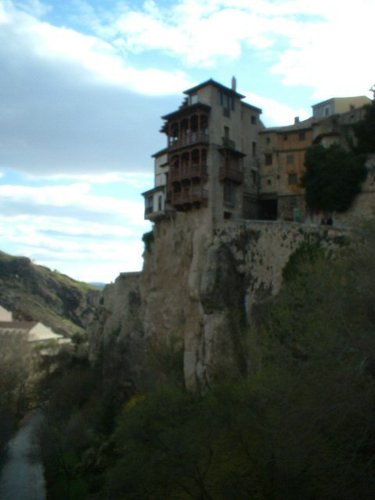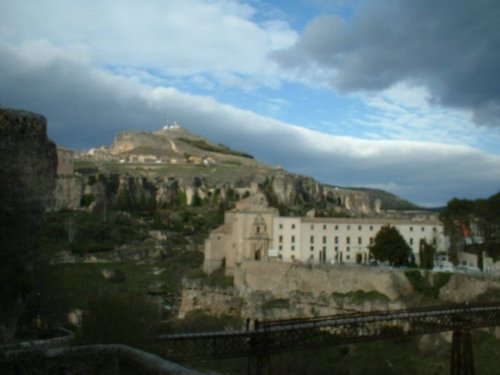 Cuenca
CuencaSee also: Travel Guide to the Province of Cuenca

Declared
a World Heritage Site by UNESCO, Cuenca spreads out below the ruins of the Arab
castle, the former fortress of Kunka. The modern area of this small city lies
below on the Júcar plain.
The old part of Cuenca is surrounded
on three sides by a deep gorge carved out by two rivers, the Júcar and
the Huécar. Cuenca is famous for its 15th Century "hanging houses"
(casas colgadas), that appear to be hanging on to the cliffs edge. One of these
houses is the Museum of Spanish Abstract Art, and is one of the finest of its
kind.
 Cuenca's monumental historic quarter lies
beside rocky walls in the heart of the Cuenca mountains with narrow, medieval
cobbled streets, plazas, arches, fountains and impressive historical buildings.
The center of the old town is the Plaza Mayor, presided over by a magnificent
Gothic cathedral.
Cuenca's monumental historic quarter lies
beside rocky walls in the heart of the Cuenca mountains with narrow, medieval
cobbled streets, plazas, arches, fountains and impressive historical buildings.
The center of the old town is the Plaza Mayor, presided over by a magnificent
Gothic cathedral.
To the east of Cuenca lies the Serranía
de Cuenca, with scenic valleys, gorges, and waterfalls and an impressive group
of rock formations known as 'The Enchanted City' (Ciudad Encantada). Cuenca is
a wine-making region, and you might like to visit one of its many bodegas to buy
some cheap, and often excellent, wine.

To get to Cuenca, take the N-III from Madrid, and take the exit at Tarancón. If coming from Valencia, take the Motilla del Palancar exit.
Treat yourselves to a night in the Parador in Cuenca, the Sixteenth Century convent of San Pablo. The former convent is opposite the old town and the famous 'Casas Colgadas'. It occupies a privileged position in the Hoz del Huécar gorge, and has an excellent restaurant which serves local dishes and wines.
| Other useful links | |
|---|---|